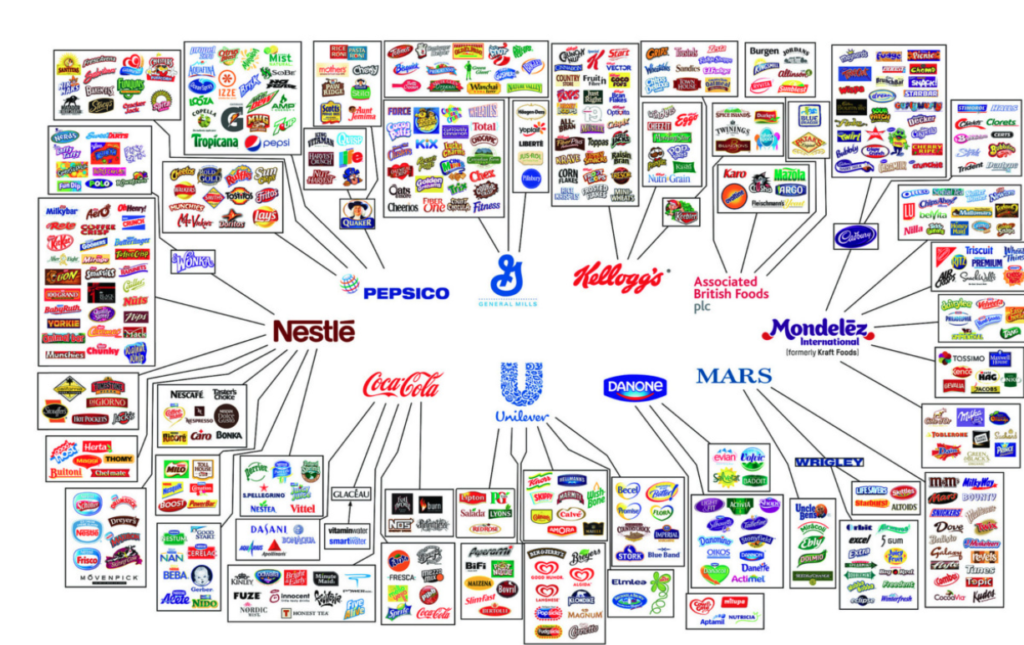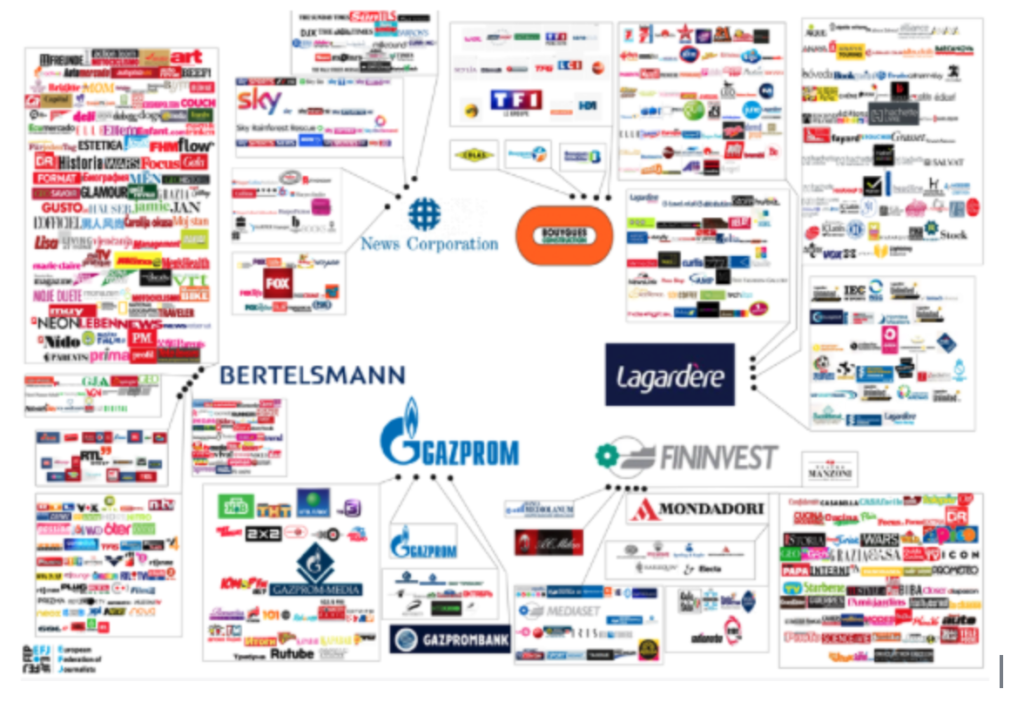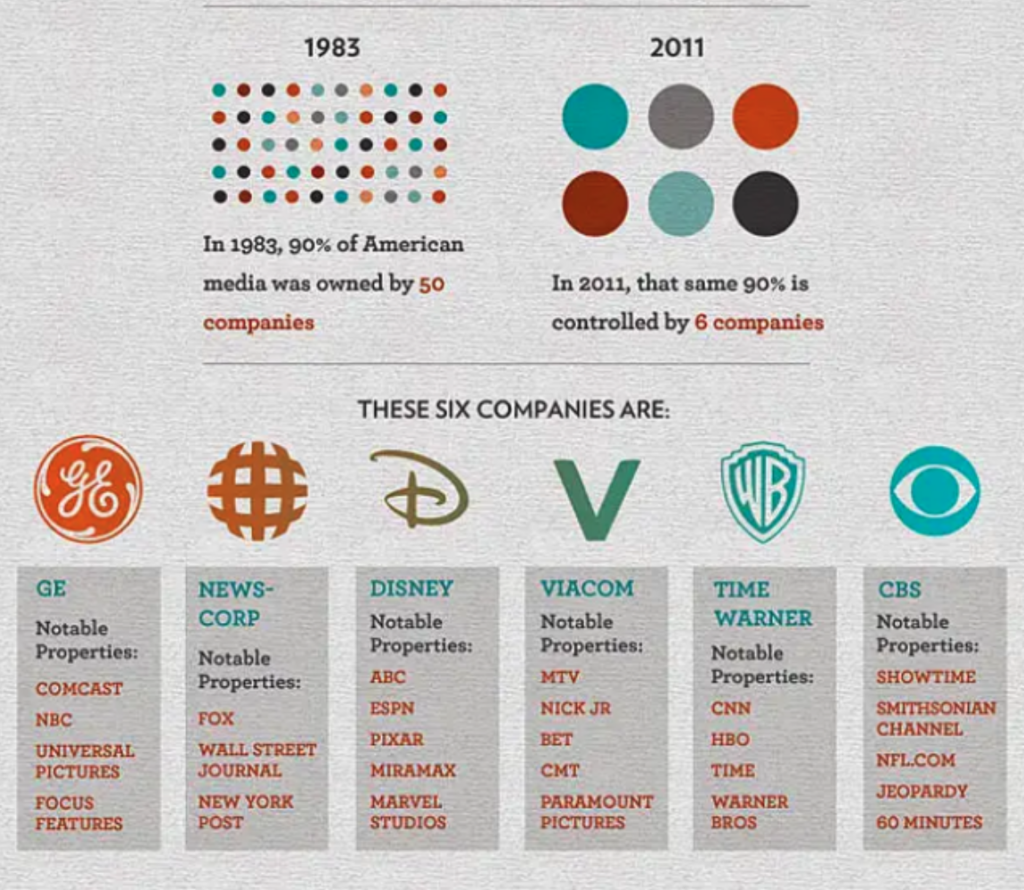Unveil the ‘Illusion of Choice’. You’re fooled everyday

The Illusion of Choice: Unveiling the Oligopoly in Brand Ownership
In a world where consumerism reigns supreme, the marketplace appears to be a vast landscape of endless options and choices. From toothpaste to smartphones, it seems as if we have an infinite array of brands to choose from. However, beneath the surface of this apparent abundance lies a complex web of corporate consolidation, where a few powerful conglomerates own a multitude of seemingly independent brands. This phenomenon is often referred to as the “illusion of choice,” and it raises important questions about the true nature of competition and consumer autonomy in the modern era.
Financial Times talks about that really clearly : https://www.ft.com/content/5a8ab27e-d470-11e9-8367-807ebd53ab77
The illusion of choice is a sociological concept that describes the perception that consumers have a wide range of options when, in reality, a handful of corporations dominate the market. This illusion is carefully crafted through branding, marketing, and product differentiation, making consumers believe they are making independent choices when, in fact, they are selecting between products owned by the same parent company.
The Oligopoly Effect
At the heart of the illusion of choice is the oligopoly effect. An oligopoly exists when a small number of large firms control a significant share of a particular market. In the consumer goods industry, this often means that a few corporations own multiple brands across various product categories. These corporations wield immense power in determining what products are available to consumers, setting prices, and influencing market trends.
Examples of Brand Ownership
To illustrate this phenomenon, consider the following examples:
- The Coca-Cola Company: Coca-Cola, Sprite, Fanta, and Dasani water may seem like distinct choices, but they all fall under the umbrella of The Coca-Cola Company.
- Unilever: This consumer goods giant owns a vast array of brands, including Dove, Axe, Lipton, and Ben & Jerry’s.
- Nestlé: Nestlé’s reach extends to brands like Nescafé, Kit Kat, Purina, and Häagen-Dazs.
- Procter & Gamble (P&G): P&G encompasses products such as Tide, Gillette, Pampers, and Olay.
Effects on Consumer Choice
The illusion of choice has several significant implications for consumers:
- Limited diversity: Oligopolies tend to prioritize profits over diversity and innovation. This can stifle creativity and limit the availability of unique products and services.
- Price control: When a small number of companies dominate a market, they have more control over pricing, potentially leading to higher costs for consumers.
- Reduced competition: Smaller, independent brands often struggle to compete with the marketing and distribution power of larger corporations, reducing true market competition.
- Consumer confusion: The multitude of brands under the same corporate umbrella can lead to consumer confusion and frustration when trying to make informed choices.
- Quality concerns: With less competition, there may be reduced incentives for companies to maintain high product quality.



Conclusion
The illusion of choice is a sobering reminder that the modern consumer landscape is not as diverse and competitive as it may appear on the surface. Behind the curtain of endless options lies a concentration of power and resources in the hands of a few corporate giants. While there is no denying the convenience and accessibility of products offered by these conglomerates, it is essential for consumers to be aware of this illusion and its implications. Vigilant consumers can choose to support smaller, independent brands and demand greater transparency and accountability from the companies that shape our consumer choices. In doing so, they can help ensure that true choice and competition flourish in the marketplace.
IS there a solution ? Yes, don’t be fooled by price war or marketing strategies. A choice between two different sodas isn’t a choice.
The choice of not to buy a soda and drink an healthy glass of water, that’s the way it should be.




